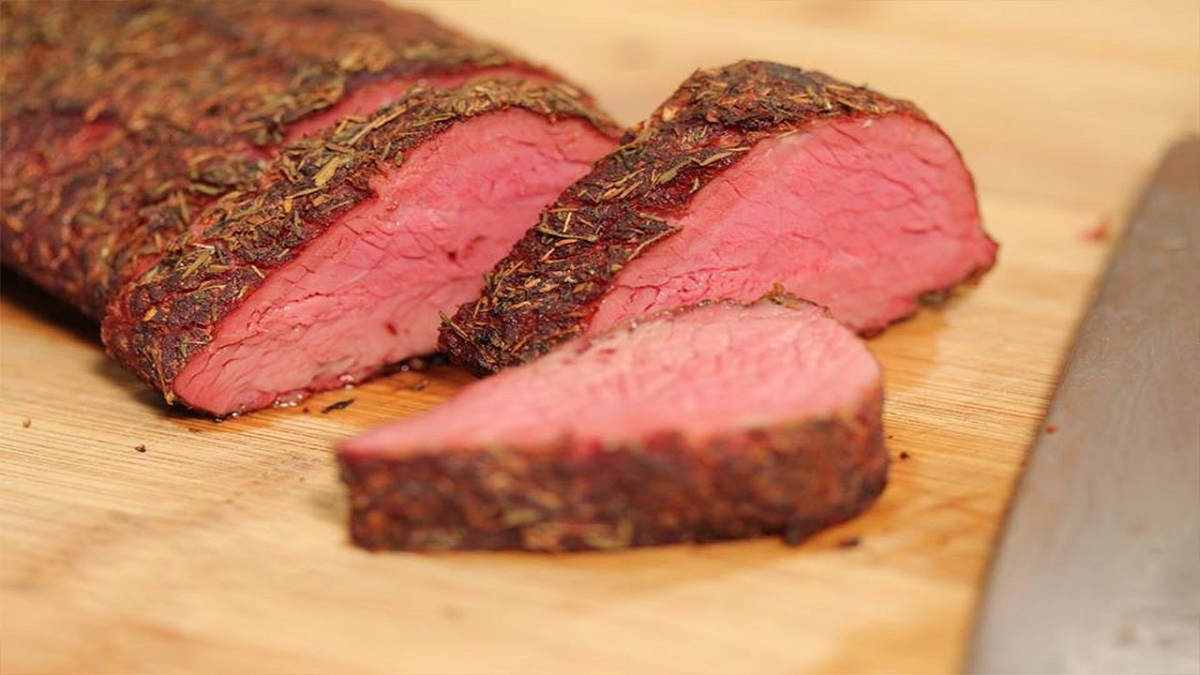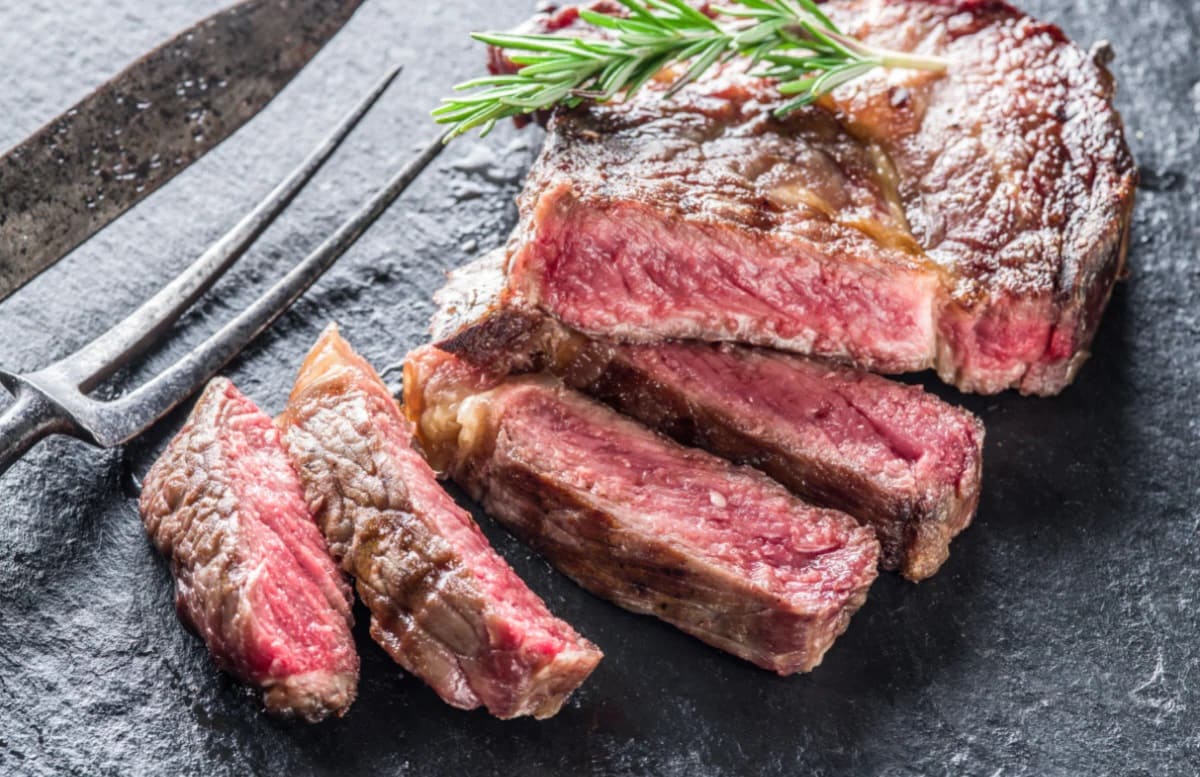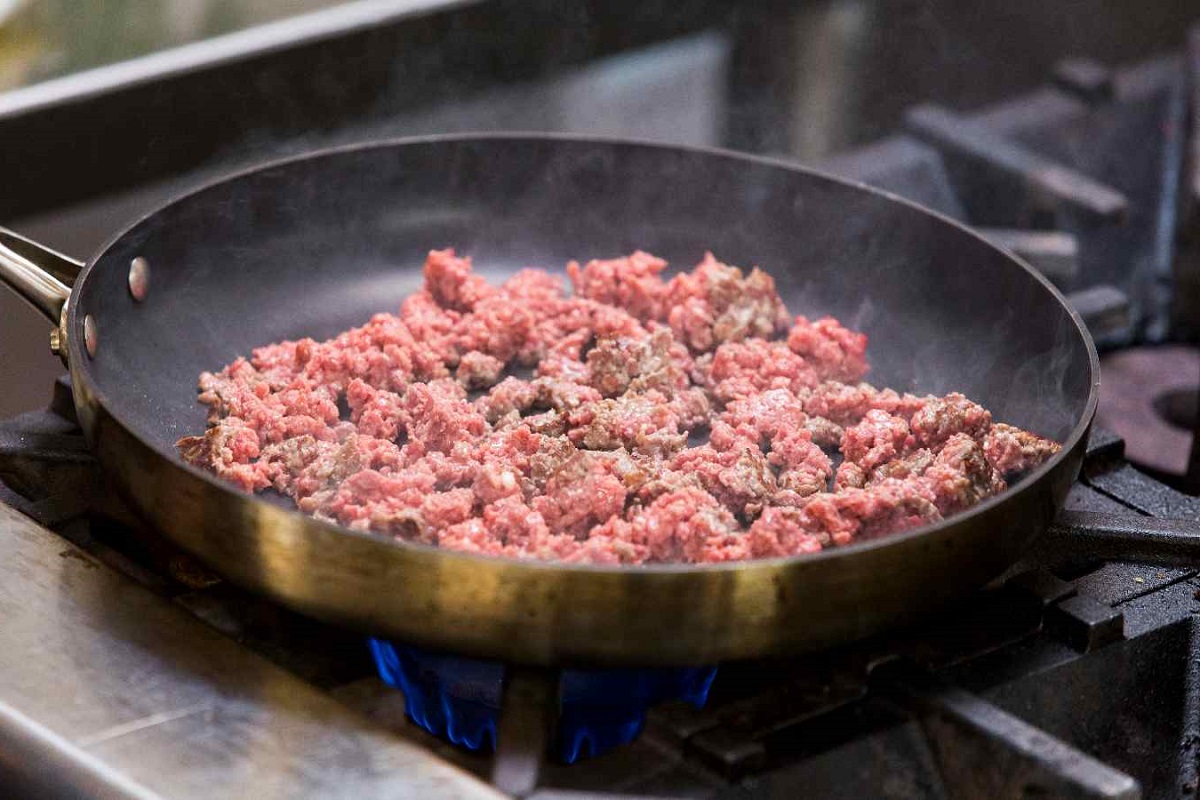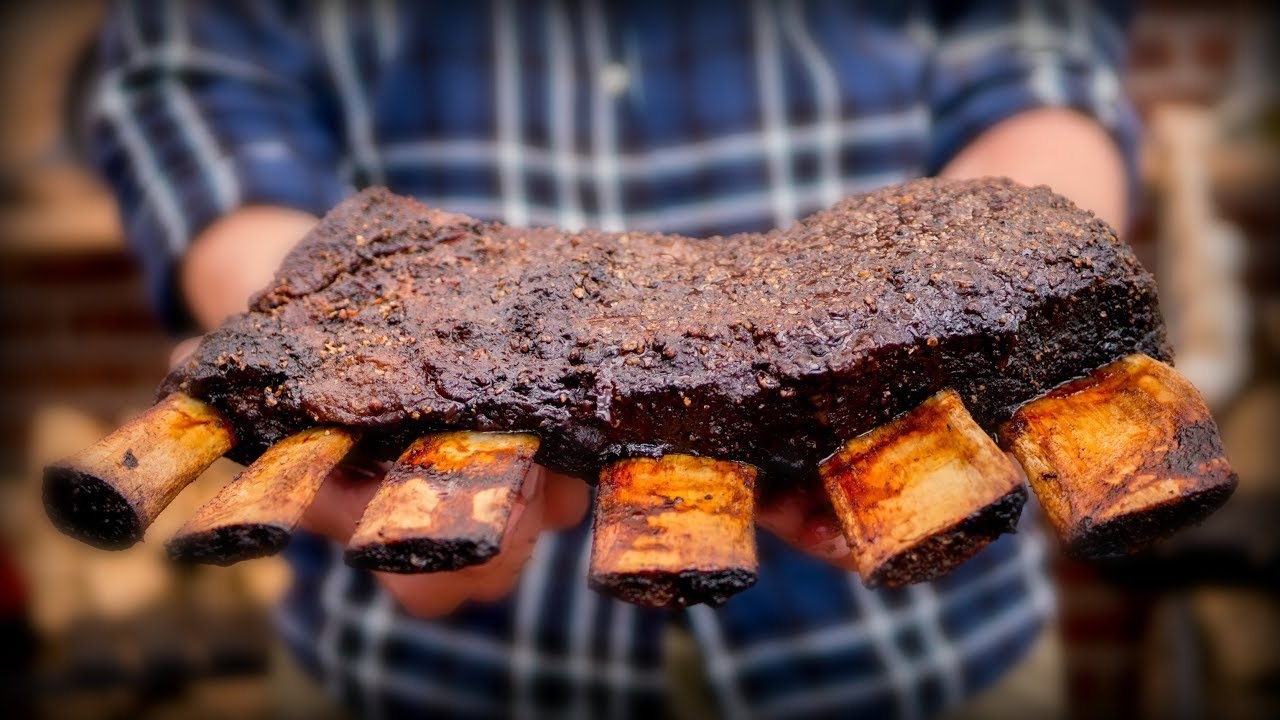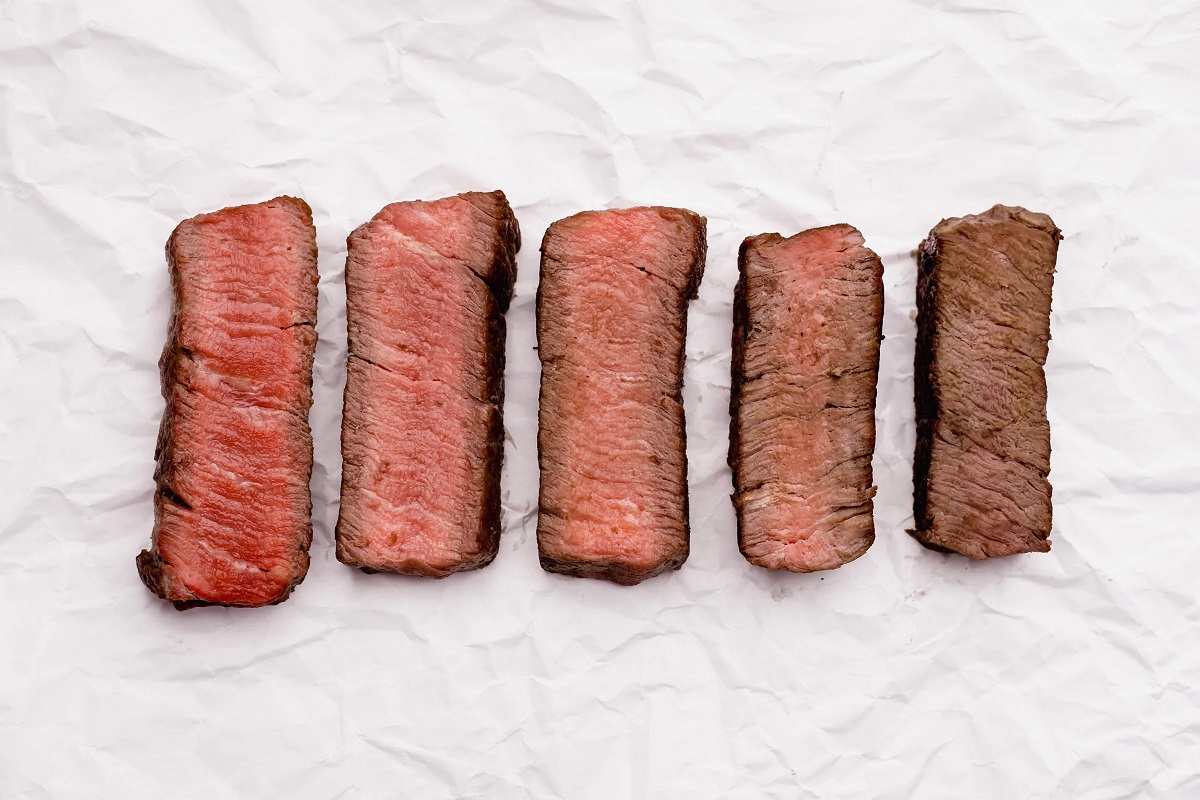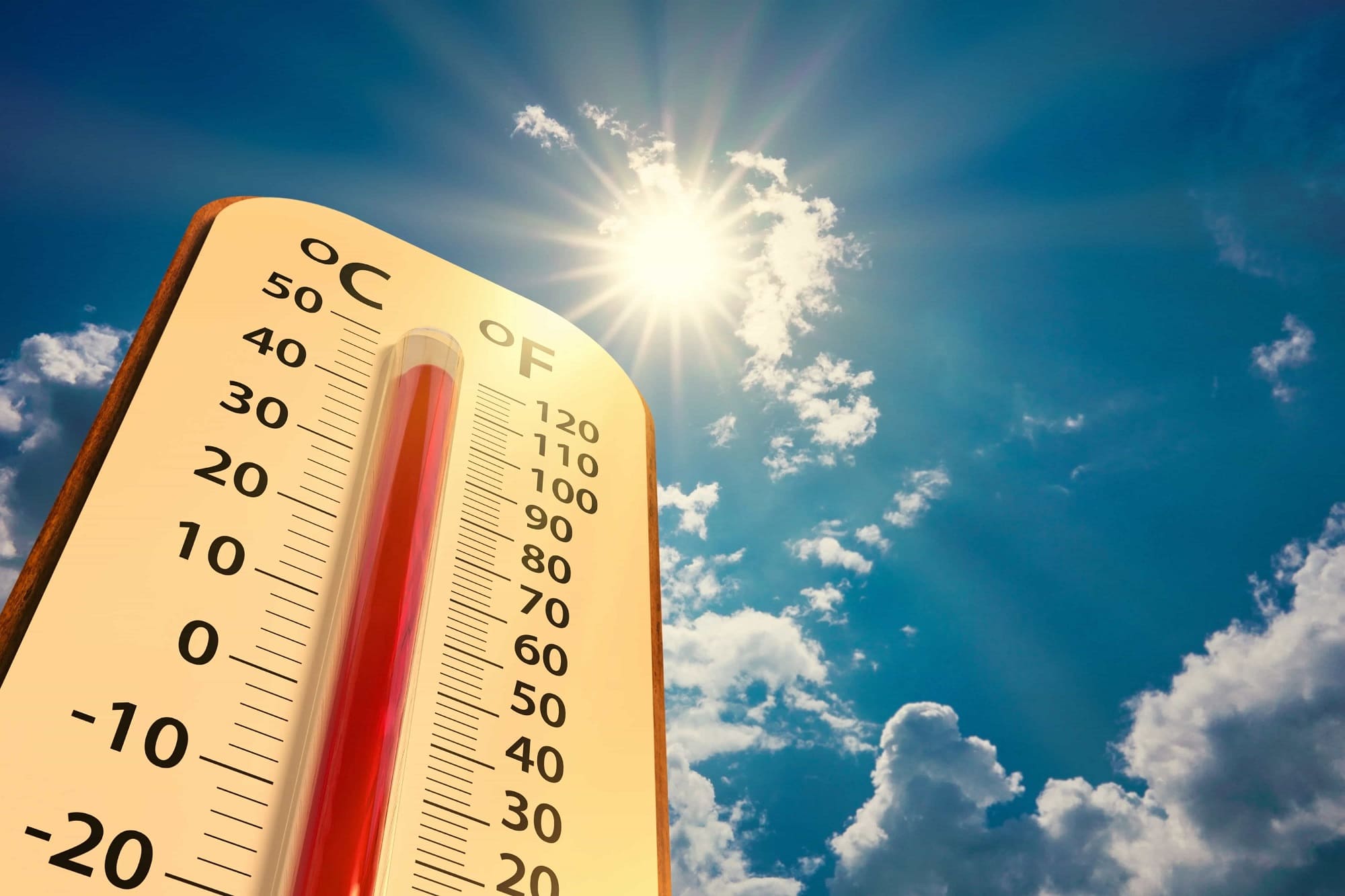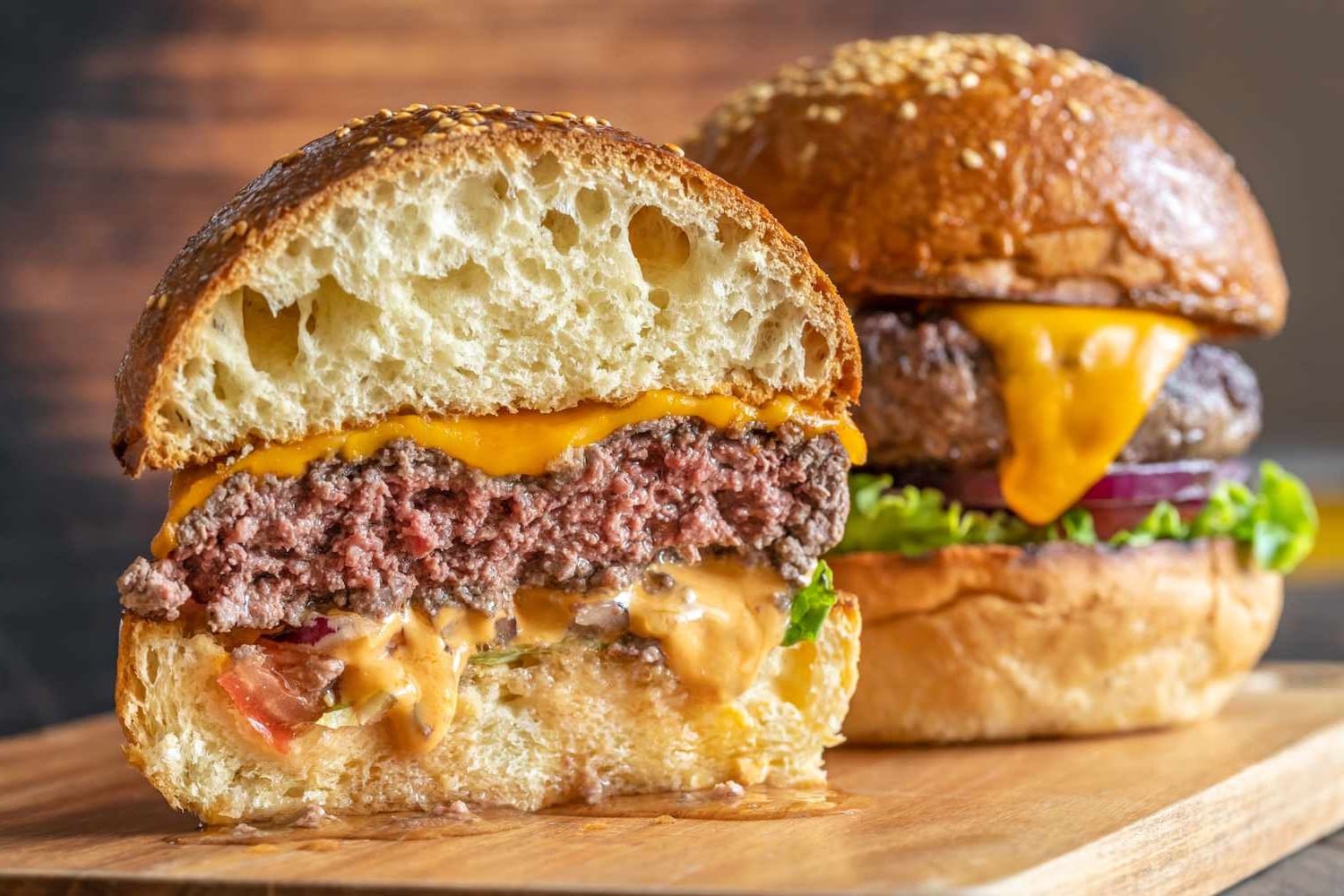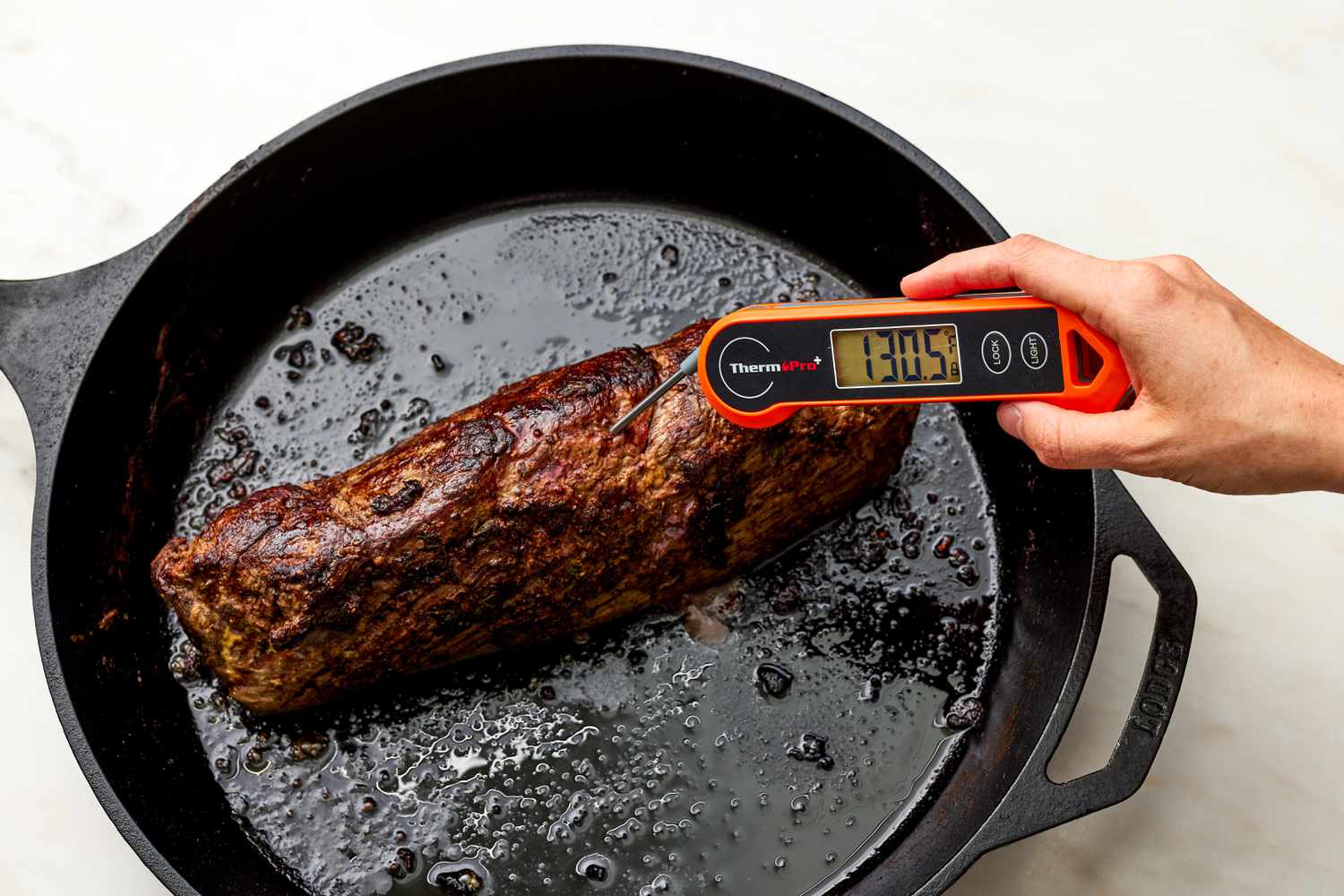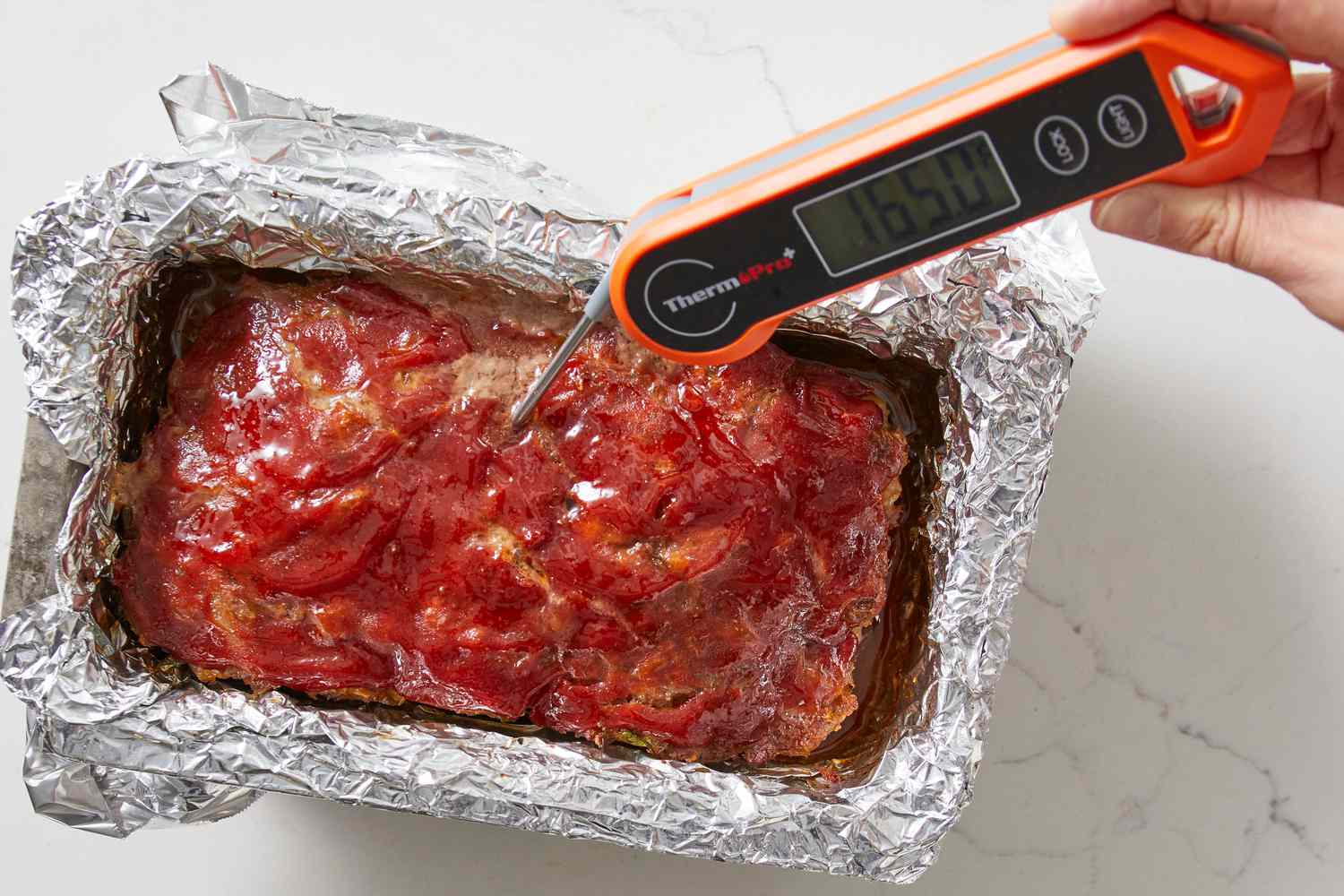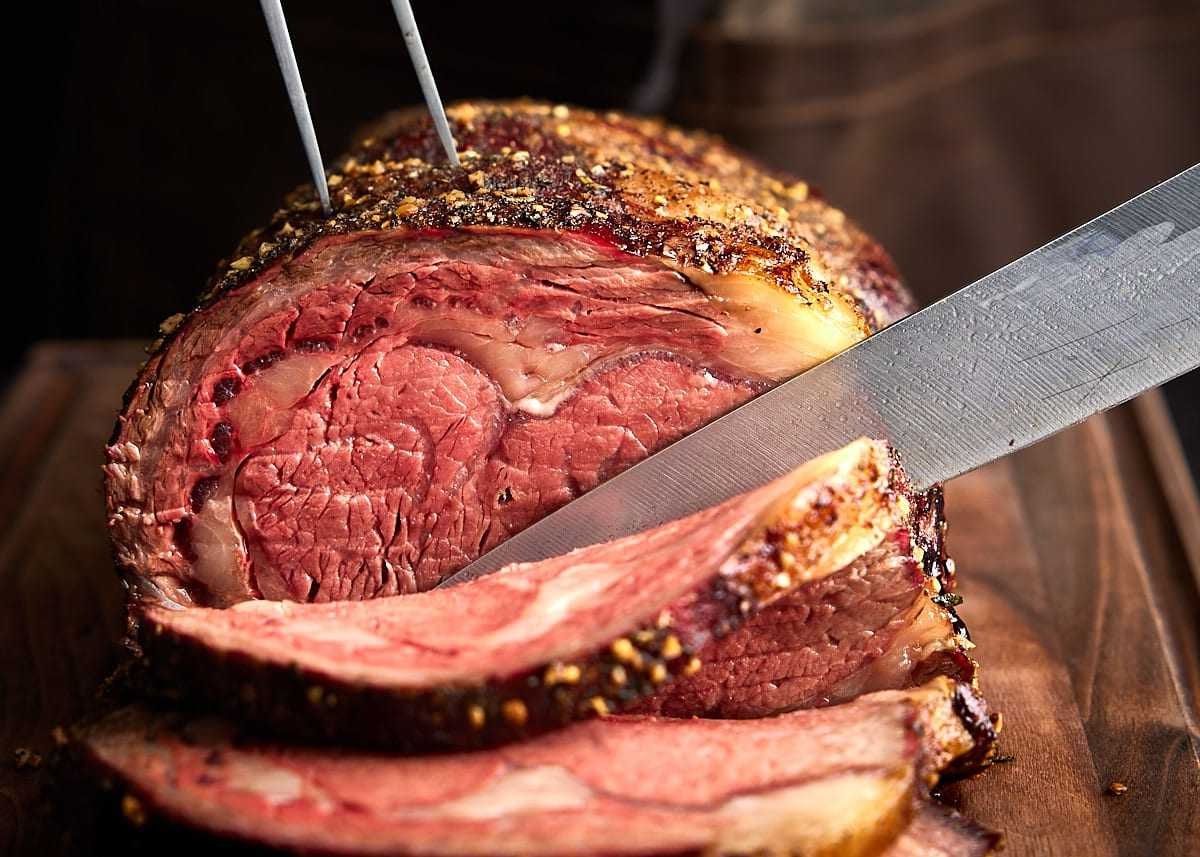Home>Culinary & Beverages>Guide To Safe Meat Cooking Temperatures
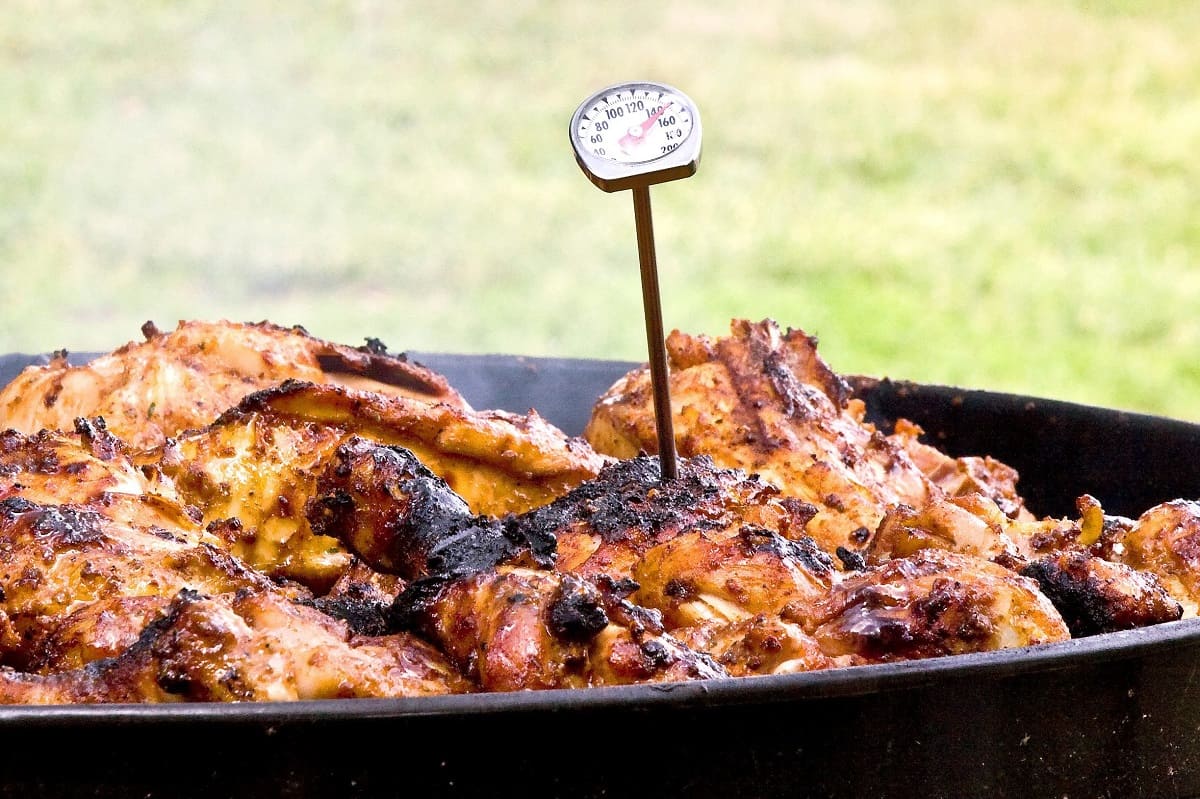

Culinary & Beverages
Guide To Safe Meat Cooking Temperatures
Published: February 22, 2024
Learn the safe meat cooking temperatures to ensure your culinary creations are both delicious and safe to eat. Follow these guidelines for perfectly cooked meats.
(Many of the links in this article redirect to a specific reviewed product. Your purchase of these products through affiliate links helps to generate commission for Temperatures.com, at no extra cost. Learn more)
Table of Contents
Importance of Cooking Meat to Safe Temperatures
Ensuring that meat is cooked to safe temperatures is crucial for safeguarding against foodborne illnesses. Raw meat, poultry, and seafood may contain harmful bacteria such as E. coli, Salmonella, and Campylobacter, which can only be eliminated through proper cooking. By reaching the recommended internal temperatures, these pathogens are effectively destroyed, making the meat safe for consumption.
When meat is undercooked, these harmful bacteria can survive and pose a significant risk to human health. Consuming undercooked meat can lead to food poisoning, resulting in symptoms such as nausea, vomiting, diarrhea, and in severe cases, more serious health complications. Therefore, it is essential to adhere to safe cooking temperatures to protect oneself and others from potential foodborne illnesses.
In addition to eliminating harmful bacteria, cooking meat to the recommended temperatures also ensures that any parasites present in the meat are effectively killed. This is particularly important when preparing pork and wild game, as they may harbor parasites that can be harmful if ingested. By cooking these meats to the appropriate temperatures, the risk of parasitic infections is greatly reduced.
Furthermore, cooking meat to safe temperatures not only eliminates harmful microorganisms but also enhances its palatability. Proper cooking allows the meat to reach the desired texture and flavor, ensuring a satisfying dining experience. Whether it's a succulent steak, juicy chicken breast, or tender pork chop, achieving the recommended internal temperatures guarantees both safety and culinary enjoyment.
In summary, cooking meat to safe temperatures is a fundamental practice for protecting against foodborne illnesses, eliminating harmful bacteria and parasites, and ensuring a delightful dining experience. By understanding the importance of safe cooking temperatures and following recommended guidelines, individuals can savor their favorite meats with confidence, knowing that they are both delicious and safe to consume.
Recommended Cooking Temperatures for Different Types of Meat
When it comes to cooking meat, ensuring that it reaches the appropriate internal temperature is essential for guaranteeing its safety and palatability. Different types of meat require specific cooking temperatures to effectively eliminate harmful bacteria and parasites while achieving the desired level of doneness. Here are the recommended cooking temperatures for various types of meat:
Beef
- Ground Beef: Ground beef, including burgers and meatloaf, should be cooked to an internal temperature of 160°F (71°C). This temperature ensures that any bacteria present in the meat are thoroughly destroyed, making it safe for consumption.
- Steaks and Roasts: For steaks, roasts, and other cuts of beef, the recommended internal temperature varies based on the desired level of doneness. For rare beef, the internal temperature should reach 125°F (52°C), while medium-rare beef requires 135°F (57°C). If you prefer medium doneness, aim for 145°F (63°C), and for well-done beef, the internal temperature should reach 160°F (71°C).
Poultry
- Chicken and Turkey: Poultry, including chicken and turkey, must be cooked to an internal temperature of 165°F (74°C) to ensure that any harmful bacteria, such as Salmonella, are effectively eliminated. This applies to whole birds, as well as chicken breasts, thighs, and wings.
- Ground Poultry: Ground poultry, such as chicken or turkey burgers, should also reach an internal temperature of 165°F (74°C) to guarantee its safety for consumption.
Pork
- Whole Cuts: When cooking whole cuts of pork, such as pork chops or roasts, the recommended internal temperature is 145°F (63°C). This temperature ensures that the pork is safe to eat while retaining its juiciness and flavor.
- Ground Pork: Similar to ground beef, ground pork should be cooked to an internal temperature of 160°F (71°C) to eliminate any harmful bacteria present in the meat.
Fish and Seafood
- Fish: The recommended internal temperature for fish and seafood is 145°F (63°C). At this temperature, the fish becomes opaque and flakes easily with a fork, indicating that it is thoroughly cooked and safe to consume.
By adhering to these recommended cooking temperatures, individuals can confidently prepare a variety of meats while ensuring both safety and culinary enjoyment. Whether it's a perfectly grilled steak, succulent roast chicken, or tender pork chop, achieving the appropriate internal temperatures is key to savoring delicious and safe meals.
Using a Meat Thermometer to Ensure Safe Cooking
A meat thermometer is an indispensable tool for ensuring that meat is cooked to the recommended internal temperatures, thereby guaranteeing its safety for consumption. By accurately measuring the internal temperature of meat, a thermometer provides a reliable indicator of doneness, eliminating the guesswork often associated with visual cues alone. Here's a detailed look at the significance of using a meat thermometer and the proper techniques for achieving safe cooking:
Significance of Using a Meat Thermometer
Using a meat thermometer is a foolproof method to ascertain the precise internal temperature of meat, poultry, and seafood, ensuring that they reach the recommended thresholds for safe consumption. Unlike visual cues such as color and texture, which can be deceptive, a thermometer provides an accurate assessment of doneness, thereby minimizing the risk of undercooking. This is particularly crucial for thicker cuts of meat, where achieving uniform doneness throughout the entire piece can be challenging without the guidance of a thermometer.
Proper Techniques for Using a Meat Thermometer
When using a meat thermometer, it is essential to insert the probe into the thickest part of the meat, away from any bones or fat, as these can impact the accuracy of the reading. For roasts and whole poultry, the thermometer should be inserted into the center of the thickest portion, ensuring that it does not touch the bone. When measuring the temperature of thinner cuts, such as burgers or chicken breasts, the probe should be inserted into the side of the meat, penetrating the center.
Types of Meat Thermometers
There are various types of meat thermometers available, each offering unique benefits for different cooking scenarios. Instant-read thermometers provide quick and accurate readings and are ideal for checking the doneness of thinner cuts of meat. Oven-safe thermometers can remain in the meat while it cooks in the oven, allowing for continuous monitoring without the need to open the oven door. Digital probe thermometers with long heat-resistant cables are suitable for monitoring the temperature of meat on the grill or smoker, providing convenience and precision during outdoor cooking.
Ensuring Accuracy and Calibration
To ensure the accuracy of a meat thermometer, it is essential to calibrate it regularly, especially if it has been dropped or exposed to extreme temperature variations. Calibration involves adjusting the thermometer to ensure that it provides an accurate reading at the desired temperature. This can be done by immersing the probe in a mixture of ice water and adjusting the thermometer to read 32°F (0°C), or by using boiling water to set it to 212°F (100°C).
Benefits of Using a Meat Thermometer
By utilizing a meat thermometer, individuals can confidently prepare a wide range of meats, poultry, and seafood, knowing that they are cooked to the recommended temperatures for safety and optimal flavor. This not only minimizes the risk of foodborne illnesses associated with undercooked meat but also ensures that the meat retains its juiciness and flavor without being overcooked. Ultimately, the use of a meat thermometer empowers individuals to elevate their culinary skills while prioritizing food safety.
In summary, the use of a meat thermometer is a fundamental practice for achieving safe and delicious cooking results. By understanding its significance, employing proper techniques, selecting the appropriate type, and ensuring accuracy through calibration, individuals can elevate their culinary prowess while safeguarding against the potential risks of undercooked meat. Whether it's a perfectly grilled steak, succulent roast chicken, or tender pork chop, the use of a meat thermometer is a cornerstone of safe and enjoyable culinary experiences.
Tips for Safe Handling and Storage of Meat
Proper handling and storage of meat are essential to maintain its quality, prevent contamination, and minimize the risk of foodborne illnesses. By following best practices for handling and storing meat, individuals can ensure that it remains safe for consumption while preserving its flavor and texture. Here are valuable tips for safely handling and storing meat:
1. Refrigeration and Freezing:
- Refrigerate or freeze meat promptly after purchase to maintain its freshness and prevent bacterial growth. Perishable meats should be refrigerated at temperatures below 40°F (4°C) to slow down the growth of harmful bacteria.
- Use a refrigerator thermometer to monitor the temperature and ensure that it remains within the safe range for storing meat. Freezers should maintain a temperature of 0°F (-18°C) or lower to preserve the quality of frozen meats.
2. Storage Duration:
- Adhere to recommended storage durations for different types of meat. Fresh beef, pork, lamb, and veal can be safely stored in the refrigerator for 3 to 5 days, while ground meats should be used within 1 to 2 days. Poultry, including chicken and turkey, should be consumed within 1 to 2 days if refrigerated.
- For long-term storage, properly wrap and label meats before placing them in the freezer. When stored at 0°F (-18°C) or lower, frozen meats can maintain their quality for several months.
3. Cross-Contamination Prevention:
- Prevent cross-contamination by storing raw meats away from ready-to-eat foods in the refrigerator. Use separate cutting boards, utensils, and containers for raw meat to avoid spreading harmful bacteria to other foods.
- Thoroughly clean and sanitize surfaces, utensils, and hands after handling raw meat to minimize the risk of cross-contamination.
4. Thawing Practices:
- Use safe thawing methods to defrost frozen meat. Thawing in the refrigerator is the safest approach, as it allows for gradual thawing while keeping the meat at a safe temperature. Alternatively, meats can be thawed in cold water or the microwave, following specific guidelines for each method.
5. Proper Cooking:
- Ensure that meat is cooked to the recommended internal temperatures to eliminate harmful bacteria. Use a meat thermometer to verify that the meat has reached the appropriate temperature for safe consumption.
6. Leftover Management:
- Refrigerate leftover cooked meats promptly and consume them within 3 to 4 days. Reheat leftovers to an internal temperature of 165°F (74°C) before serving to ensure their safety.
By implementing these tips for safe handling and storage of meat, individuals can maintain the quality and safety of their meat products, reducing the risk of foodborne illnesses and enjoying delicious, wholesome meals.
Understanding the Dangers of Undercooked Meat
Undercooked meat poses significant health risks due to the potential presence of harmful bacteria, parasites, and viruses that can cause foodborne illnesses. Consuming meat that has not been cooked to the recommended internal temperatures can lead to a range of adverse health effects, making it crucial to understand the dangers associated with undercooked meat.
One of the primary risks of undercooked meat is the potential contamination with pathogenic bacteria such as E. coli, Salmonella, and Campylobacter. These bacteria are commonly found in raw meat and poultry and can cause severe gastrointestinal infections when ingested. Symptoms of foodborne illnesses resulting from these bacteria include nausea, vomiting, diarrhea, abdominal pain, and fever. In more severe cases, these infections can lead to dehydration, organ damage, and even life-threatening complications, particularly in vulnerable populations such as young children, the elderly, and individuals with weakened immune systems.
In addition to bacterial contamination, undercooked meat may also harbor parasites such as Toxoplasma gondii and Trichinella spiralis, which can cause parasitic infections when consumed. These parasites are commonly found in undercooked pork, wild game, and certain types of fish. Infections with these parasites can lead to flu-like symptoms, muscle pain, and in the case of Trichinella spiralis, potentially life-threatening complications affecting the heart, lungs, and nervous system.
Furthermore, the consumption of undercooked ground meat, particularly beef, carries the risk of exposure to Escherichia coli O157:H7, a strain of bacteria that produces toxins leading to severe and sometimes bloody diarrhea. This strain of E. coli can cause hemolytic uremic syndrome (HUS), a condition characterized by the destruction of red blood cells, kidney failure, and other serious complications, particularly in children.
It is important to recognize that the dangers of undercooked meat extend beyond immediate health effects. Inadequately cooked meat can also contribute to the spread of foodborne illnesses within communities and households, posing a risk to individuals who may come into contact with contaminated surfaces, utensils, or other food items.
By understanding the potential dangers of undercooked meat, individuals can make informed decisions about food preparation and consumption, prioritizing the safety of themselves and their loved ones. Adhering to recommended cooking temperatures, using meat thermometers, and practicing proper food handling and storage techniques are essential steps in mitigating the risks associated with undercooked meat, ensuring that meals are not only delicious but also safe and wholesome.
